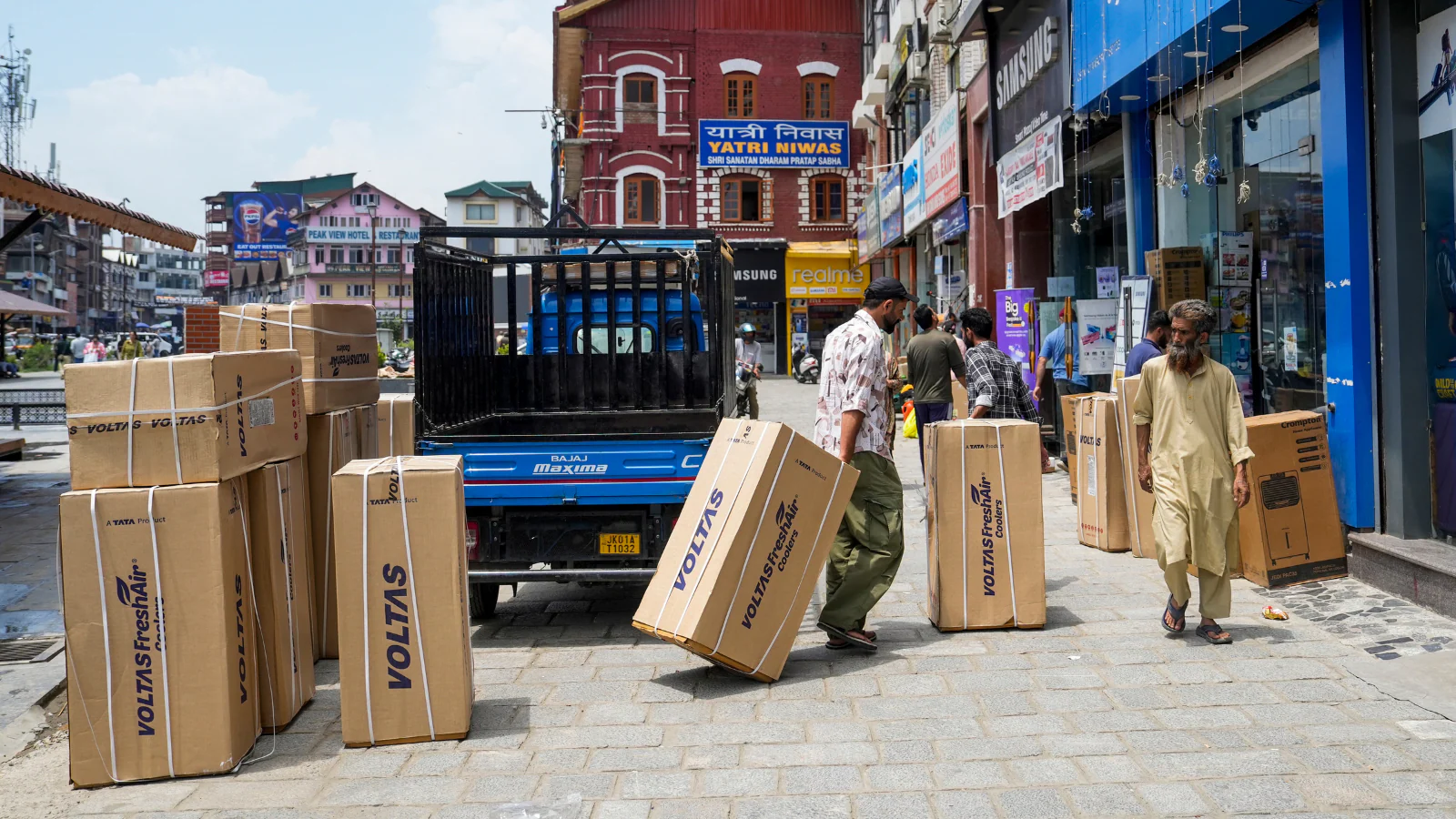By Aparna Deb,News18
Copyright news18

The reduction in GST rates on consumer durables is beginning to show in festive sales, with retailers reporting a notable rise in demand for premium appliances like large-screen televisions and dishwashers. While it may be too early to call this a broad-based upgrade cycle, companies say the early momentum is encouraging and consumer sentiment appears stronger than last year, according to a Moneycontrol report.
Television Sales Surge with Discounts and Cashback
Sony India said it will pass on an effective 7.8 per cent benefit to buyers starting September 22. The company has rolled out festive discounts of up to Rs 70,000 on its BRAVIA television range, covering popular screen sizes: up to Rs 70,000 off on 85-inch models, Rs 51,000 on 75-inch, Rs 40,000 on 65-inch, and Rs 32,000 on 55-inch sets.
Samsung has also jumped into the festive season with a 20 per cent cashback on select bank cards, bundled freebies, a 3-year warranty on all TVs, EMIs starting at Rs 990 per month for up to 30 months, and zero down payment schemes.
Other Appliances See Price Corrections and Uptick in Demand
Panasonic has lowered prices across its air-conditioner range following the GST cut, with reductions averaging around Rs 5,000 per unit, or 7–8 per cent lower on average. Smaller models saw cuts of Rs 3,000, while bigger models received reductions of up to Rs 7,000–8,000 depending on tonnage and specifications.
“We’re seeing a marked preference for premium products like side-by-side refrigerators, advanced washing machines, energy-efficient split ACs, fans, and air fryers. Growth is coming from customers beyond top-tier cities, with several smaller towns witnessing multi-fold increases in demand,” said an Amazon spokesperson, adding that momentum is expected to accelerate through Diwali.
Walmart-backed Flipkart reported around 26 per cent YoY growth in the purchase of premium products, including mobiles, TVs, and refrigerators. Croma owner Infiniti Retail Ltd highlighted the ‘strongest festive start’ in recent years, with demand shifting toward larger screen sizes and premium technologies such as QLED. “Dishwashers are also seeing rapid adoption, especially in metro and Tier 1 cities. Even in the non-seasonal air conditioner category, response has been encouraging, driven by GST-led price corrections and festive demand,” said Shibashish Roy, CEO & MD of Infiniti Retail Ltd.
Middle-Class Consumers Drive Premium Upgrades
“Buyers are witnessing significant price cuts of 8–10 per cent, improving affordability, particularly for middle-class consumers who had been waiting for the right moment to upgrade,” said Abhishek Gupta, Director of Finance and Operations at Summercool Home Appliances.
Avneet Singh Marwah, CEO of Super Plastronics Private Limited, noted that 75-inch TVs are now more affordable, with price reductions of up to Rs 15,000, leading to a 20 per cent increase in sales on the very first day of GST 2.0. “Within our portfolio, 55-inch models grew by 35 per cent. Premium 55–65-inch TVs now contribute 70 per cent of sales, up from 50 per cent a year ago,” he said.
LG also confirmed that early trends are encouraging, pointing to positive consumer sentiment that is expected to continue.
GST 2.0 and Financing Options Drive Sales
The GST reforms implemented earlier this month lowered most appliances to the 18 per cent slab from 28 per cent, making products 7–10 per cent cheaper on average. “GST savings, festive discounts, and convenient finance schemes have created a conducive environment for revival in demand. Families are spending more and upgrading faster, making this festival one of the most promising in recent years for consumer electronics and home appliances,” added Gupta.
Lotus Electronics reported a 35 per cent YoY growth in recent days, with Director Gaurav Pahwa noting, “The demand is mostly coming from middle-class consumers. People are buying better products now that affordability has improved.”



